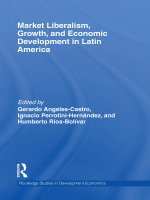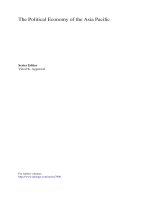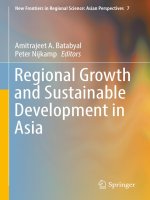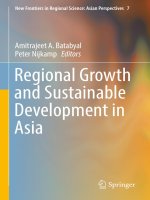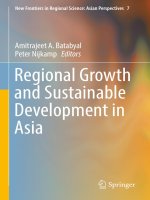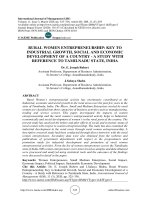Economic growth and economic development 198
Bạn đang xem bản rút gọn của tài liệu. Xem và tải ngay bản đầy đủ của tài liệu tại đây (49.95 KB, 1 trang )
Introduction to Modern Economic Growth
constant, Europeans initiated very significant changes in the economic institutions
of different societies.
The impact of European colonialism on economic institutions is perhaps most
dramatically conveyed by a single fact–historical evidence shows that there has been
a remarkable Reversal of Fortune in economic prosperity within former European
colonies. Societies like the Mughals in India, and the Aztecs and the Incas in the
Americas were among the richest civilizations in 1500, yet the nation-states that now
coincide with the boundaries of these empires are among the poorer nations of today.
In contrast, countries occupying the territories of the less-developed civilizations of
North America, New Zealand and Australia are now much richer than those in the
lands of the Mughals, Aztecs and Incas.
.
USA
CAN
Log GDP per capita, PPP, in 1995
10
BRB
MUS
9
GAB MYS
ZAF
PAN BWA
CRI
KNA
LCA
NAM
GRD
FJI
GTM
8
LKA
SWZ IDN
GUY
AGO
ZWE
BLZ
VCT
TZA
SGP
CHLBHS
ARG
VEN URY
PER
DMA
BOL
HND
CMR
GIN
CIV
SEN
COM PAK
SDN GHA
VNM LSOIND
GMB
TGO
CAF
HTI
BEN
LAO
KEN
UGA
NPL
BGD TCD MDG
ZAR
BFA
NGAZMB
NER
ERI
BDI
MLI
RWA
MWI
MOZ
7
ECUTUN
DZA
DOM
PRY
JAM
PHL
SURMAR
CPV
EGY
SLV
MEX
COL
TTO
BRA
HKG
AUS
NZL
NIC
MRT
COG
SLE
6
0
50
Urbanization in 1995
100
Figure 4.4. Urbanization and Income today.
The Reversal of Fortune is not confined to such comparisons. To document the
reversal more broadly, we need a proxy for prosperity 500 years ago. Fortunately,
urbanization rates and population density can serve the role of such proxies. Only
societies with a certain level of productivity in agriculture and a relatively developed system of transport and commerce can sustain large urban centers and a dense
184
